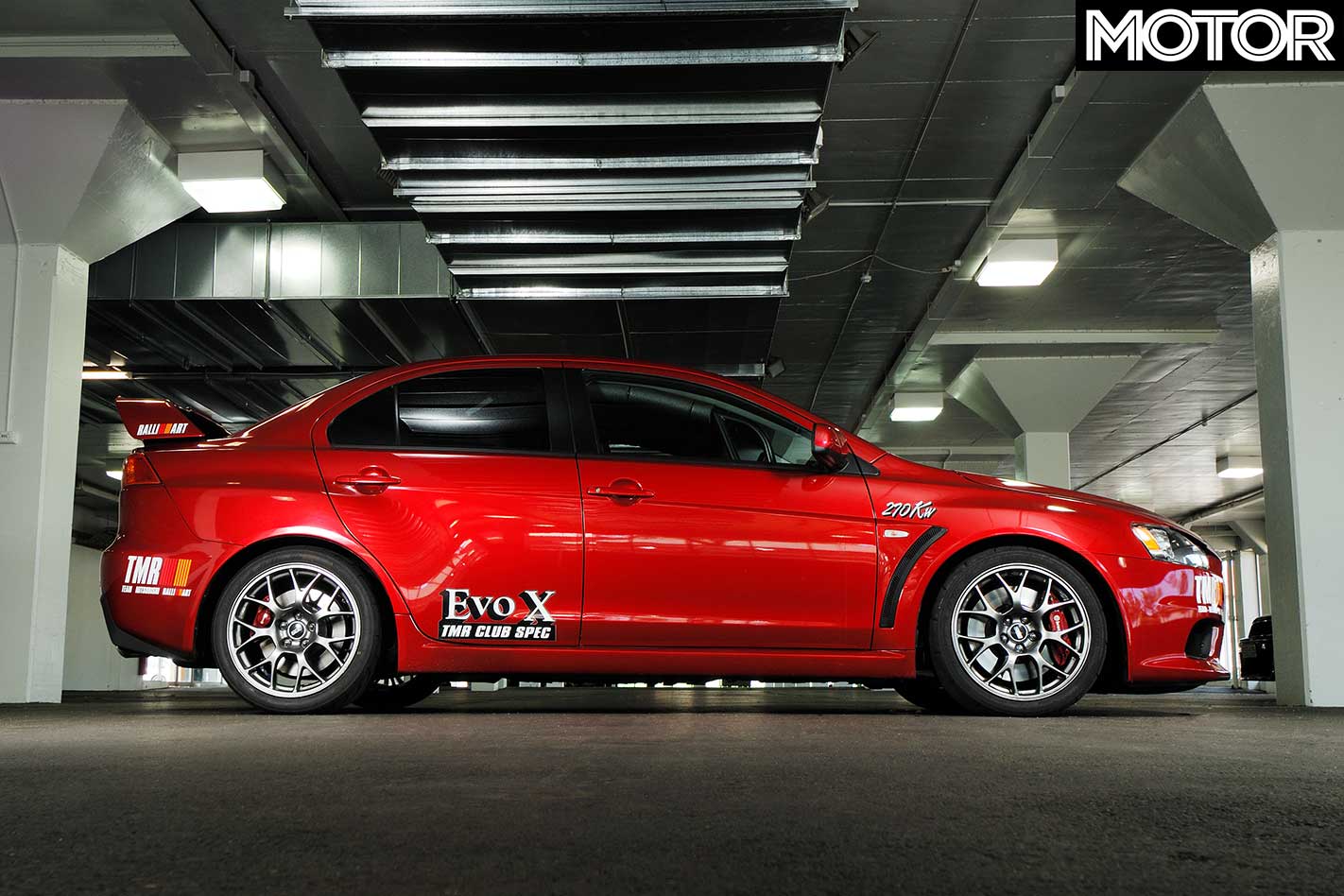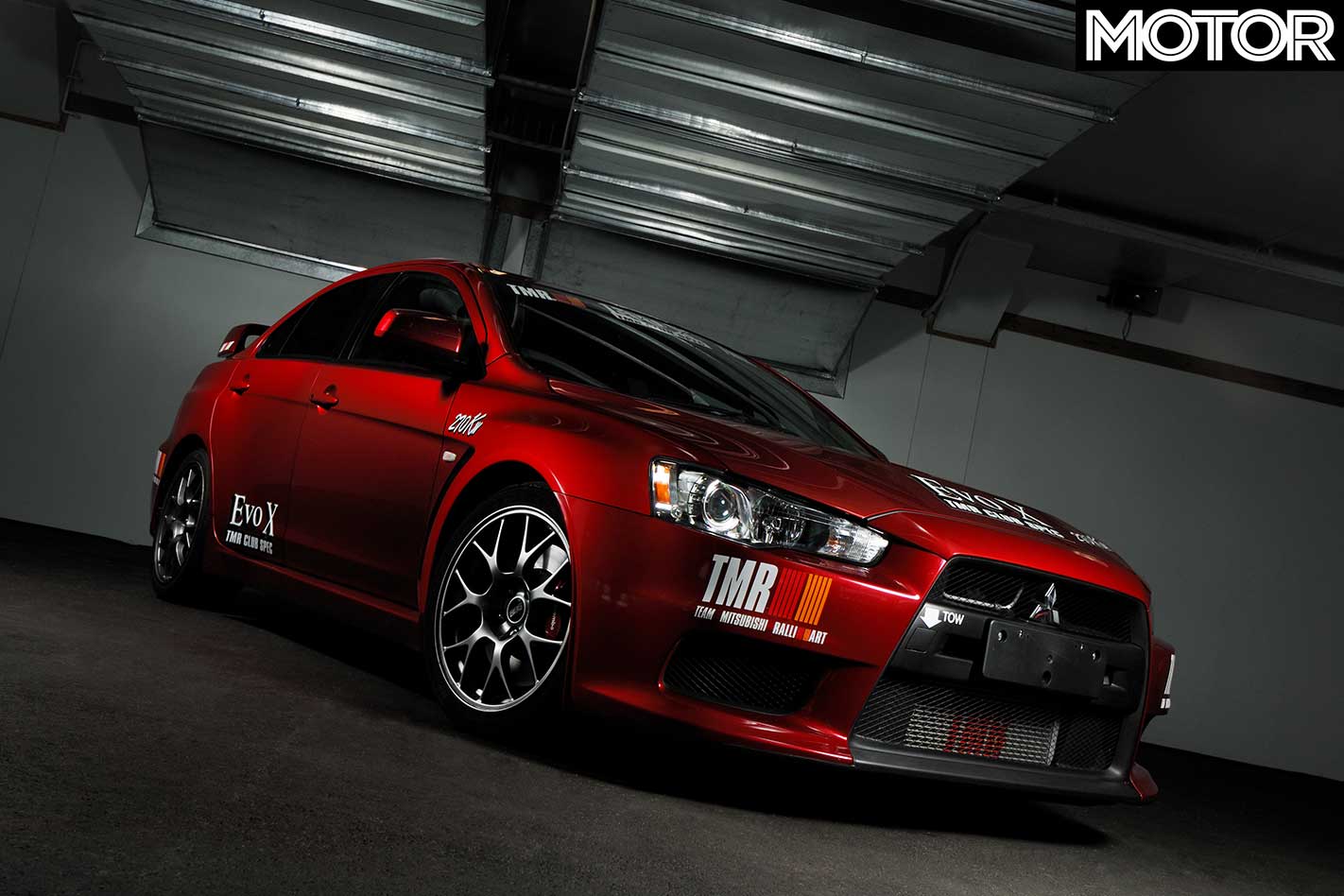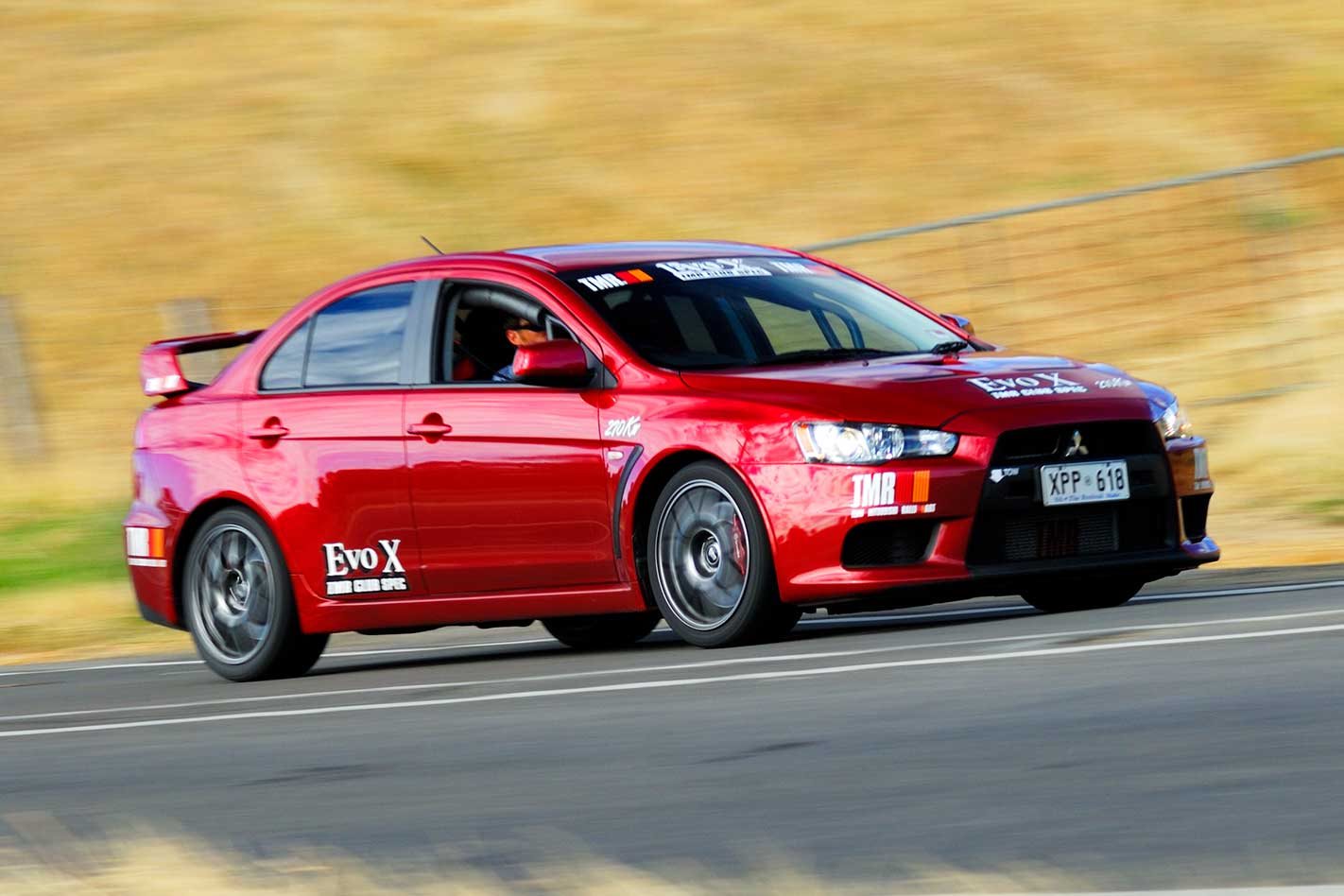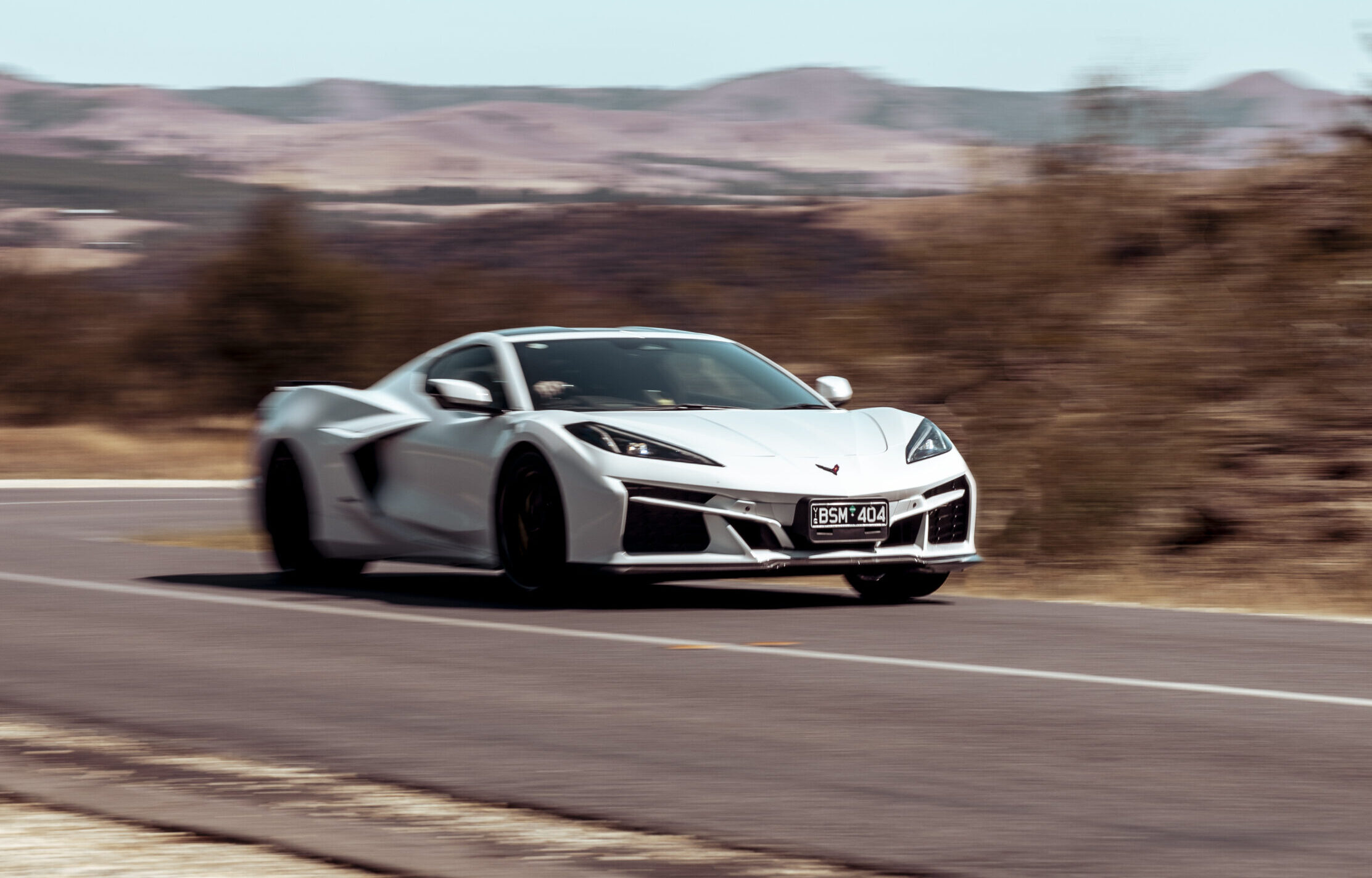If the X is an attempt at a family-friendly Evo, a mix of daily driveability and red-mist performance, then it succeeds … to a degree.
But it’s still a bit harsh to be called comfortable, and a bit soft to be called genuinely hardcore.The new TMR Club Spec goes a long way in addressing the latter.




ENGINE: 1998cc 4cyl, DOHC, 16v, turbo POWER: 270kW @ 6500rpm TORQUE: 490Nm @ 3500rpm WEIGHT: 1595kg TOP SPEED: N/A 0-100KM/H: N/A PRICE (2006): $85,875 (as tested)
LIKE: Mega output gains, sharper chassis, a true giant-killer (finally) DISLIKE: At $86k, its a very expensive Lancer, and those squealing brakes





